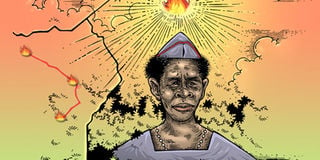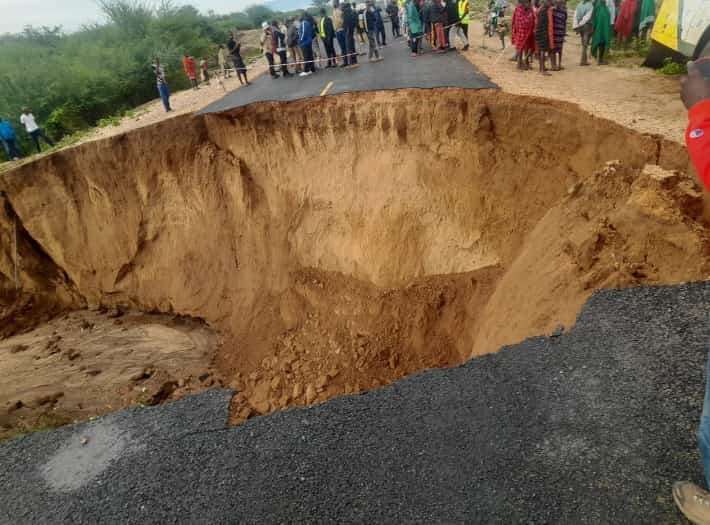Prime
From defeating Lakwena to toasting to a marriage

What you need to know:
In 1987, a 29-year-old National Resistance Army commander was faced with the prospect of snuffing out Alice Lakwena’s armed struggle in Busoga Sub-region. As Isaac Mufumba writes, Nathan Mwenemuzeyi would go on to enjoy his moment of nuptial bliss barely hours after overseeing an operation that obliterated Lakwena’s troops.
The enemy’s movement meant the National Resistance Army (NRA) had to move to Nanvunaano Primary School to prepare for an onslaught.
Swaibu Igulu Basalirwa, a member of the Joint Basoga Lakwena Victims’ Association, says the NRA made a two-pronged attack. With Nabulagala hill to the west and Bukaseme to the east, one group moved eastwards around Bukaseme hill and attacked the valley from the north; while another group made a direct attack from the south.
Anticipating an attack from the south, the rebels positioned a sniper in a cave on the foothills of Bukasame hill. The cave is at a point overlooking a bend on the road leading up from Iziru Trading Centre in Jinja District to Nawampiti Trading Centre in Luuka District.
Whereas the NRA attack from the north took the rebels by surprise, the attack from the south was pegged back by the sniper for more than 30 minutes. The sniper operated a mounted machine, and it took the use of small artillery fire to extinguish the threat. This paved the way for the fight that annihilated the rebel force. The mobile forces then commenced a mop-up operation.
Kilama’s bizarre fall
The rebels were dealt a blow with the capture of the much-feared and highly ruthless Lt Col Kennedy Kilama under very hilarious circumstances. Lt Col Kilama had at some point acted as the Second in Command to Lt Col John Ogole, who had been appointed to head Operation Bonanza. Operation Bonanza had been launched by the Uganda National Liberation Front (UNLF) in an attempt to wipe the then-rebel NRA out of Luweero Triangle.
Col Ogole is said to have once travelled from the war theatre to the UNLA headquarters in Bulange, leaving Lt Col Kilama in charge. He is said to have taken advantage of Col Ogole’s temporary absence and ordered the UNLA to descend on villages around Katikamu, where the tactical headquarters were, employing the scorched earth policy. Almost every living thing was killed as he sought to choke the NRA.
Kilama was as a result redeployed back to Rubongi Barracks in Tororo, but his brutality had been taken note of. Idi Amin had earlier given Rubongi an aura of invincibility when he christened it the Air and Seaborne Battalion. The perception that Rubongi was a home for only designated dogs of war continued to hang over the barracks long after Amin had gone. The public was, therefore, quick to perceive David Oyite Ojok’s earlier decision to name Kilama Commander as an endorsement of his credentials as a fierce and battle-hardened fighter.
After the fall of the Obote II regime, Lt Col Kilama was always close to Gen Bazillio Olara Okello and belonged to the school of thought that did not believe in the resolution of the political questions of the time through talks.
“With a record such as his, one would have expected him to have either died in combat or captured during a fight, but that was not it,” Basalirwa recounts.
Unarmed villagers, who had taken it upon themselves to help the NRA carry out a mop-up operation, found Kilama crouching in a smelly village latrine before handing him over to the army in Kawete.
Prof Ojok captured
A few days after Kilama was nabbed, the wanainchi landed on another big fish—Prof Isaac Newton Ojok. An Education minister during Obote II, Prof Ojok, who had reportedly been working as Lakwena’s Chief of Central Administration, was clad in a dirty yellow T-shirt and a torn pair of trousers. He was arrested in Waibuga, Luuka County, where he had fled after the rebels came under heavy fire in Busiro and Namasiga villages. At the time of his arrest, he was trying to find his way out of Busoga Sub-region.
Prof Ojok was later tried twice for treason but he denied the charges, saying he was abducted by the rebels and forced to stay among their ranks. He told the court during this initial trial before Justice Constance Byamugisha that he was left with little choice but to stay with the rebels because Alice Lakwena had threatened to kill him if he dared escape.
The professor, who had earlier quit his university teaching job for politics, was represented by lawyers Tibeijuka Ateenyi and Alfonse Owiny-Dollo. The latter has since become the Chief Justice. Prof Ojok was initially convicted and sentenced to death by hanging, but the sentence was overturned on appeal.

Severino Lukoya (right) and Aya Dorina (2nd right), the parents of Holy Spirit Movement leader Alice Lakwena lay a wreath on the casket containing the body of their daughter during her burial in Bungatira Village, Gulu on February 3, 2007. photo/file
Final battle
In the third week of October 1987, information started emerging that Lakwena and some of her fighters had retreated to Naminyagwe Forest Reserve in Nawambiri Village, Magada Sub-county in present-day Namutumba District.
The forest reserve has since been cleared for human activity, but it was at the time in close proximity to Buyenvu River, a tributary of the River Mpologoma. Mr Bikobere Ziraba, a former Chief of Kagulu Parish, which comprises Nawambiri, Buyenvu, Naminyagwe and Kagulu villages, says the rebels could have picked it as it would have been ideal as a training camp.
“The vegetation favoured the establishment of a camp. River Buyenvu would have provided both fish and water,” the 85-year-old Mr Bikobere said.
The NRA did not give the rebels a chance to settle in. On the evening of October 23, the NRA forces arrived in Namutumba and pitched camp at Namutumba Railway Station in readiness for an attack the following morning.
The man, who was placed in charge of the final onslaught on the rebels, was Commander Nathan Mwenemuzeyi. Acclaimed for being one of the 27 fighters who, on February 6, 1981, attacked Kabamba Military School to signal the start of the NRA Bush War, Mwenemuzeyi was no slouch. This particular assignment did present a very huge complication though. Mwenemuzeyi had been scheduled to walk down the aisle at St Andrew’s Church in Jinja.
The then 29-year-old Commander could not contemplate calling off a wedding, which he had long promised the parents of his 23-year-old fiancée, Jennifer Kyobutungi. It was in fact more than four years.
From the bush with love
The story of their courtship is the stuff of legend. It has been told over and over again around Gaddafi Garrison where the couple was domiciled. One of the people Kyobutungi confided in was Denis Nyiiro. At the time, he was one of the foremen supervising some renovation work in the officers’ residential area.
Kyobutungi had been a student in Kiboga when the young guerrilla fighter spotted her. He was instantly smitten. One fine afternoon, the commander had followed her home. Rather than face her, he walked up to the father and declared his intentions.
“I am a guerrilla, but I am sure we are winning the war … once we win, I will be coming back to marry your daughter. Please do not allow her to be confused by anyone. I love her,” he told the befuddled father.
Duty calls
No sooner had the NRA taken charge of most of the country than he returned to Kiboga to claim her. The nuptials were meant to seal the relationship, but duty was now calling. Mwenemuzeyi was never the type to run away from a good fight. In the wee hours of Saturday, he arrived in Namutumba to take charge of his troops.
The NRA attacked the rebels’ positions in a dawn raid. It is not clear whether the need to rush back to Jinja had anything to do with it, but the NRA descended on the rebels with unprecedented ferocity. Within about an hour, Lakwena’s forces could no longer be talked about as a fighting force.
Mwenemuzeyi then rushed back to Jinja. At around 12 noon, Bishop Cyprian Bamwoze wedded the couple. No sooner had the lovebirds marched out of the church than Mwenemuzeyi rushed back to Namutumba to oversee the mop-up operation.
“He returned to the reception at midnight to announce that the war was over,” Mr Mukisa recounted.
As the champagne popped that night and the guests waltzed away, it was not just to celebrate the Mwenemuzeyis’ wedding, the end of both the war and the Holy Spirit Movement was also a reason to celebrate.
Much to the NRA’s embarrassment, Lakwena, who was injured during the final fighting, still managed to escape. It was believed that she had been put on a makeshift raft and helped to cross River Mpologama into Butaleja District.
More than a month after the fighting, the self-styled Priestess and 118 of her rebels were arrested in Kenya on December 26, 1987. They were charged with having illegally entered the country. Lakwena passed away in January 2007 at a refugee camp in Kenya.
The raid
The National Resistance Army (NRA) attacked the rebels’ positions in a dawn raid. The NRA descended on the rebels with unprecedented ferocity. Within about an hour, Lakwena’s forces could no longer be talked about as a fighting force.




